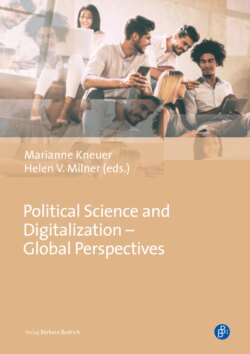Читать книгу Political Science and Digitalization - Global Perspectives - Группа авторов - Страница 30
На сайте Литреса книга снята с продажи.
2.2 Mexican universities: a world of difference
ОглавлениеMexican universities are divided into two conditions: public and private and there is a huge gap among them. Most of the public universities have scarce resources, old facilities, and infrastructure and focus mostly on teaching, except the ones in the center region of Mexico. Private universities are concentrated in Mexico City and the states of Puebla and Nuevo León. Most of them also focus on teaching but compared to the public ones, count on modern facilities and infrastructure, their teachers are younger, and many of them have studied in foreign universities (Reveles 2016, Loaeza 2005). The public universities’ gap also widens with the region of the country. Most universities closer to the capital, Mexico City, have more public funding, better facilities, and a large student population.
It is important to emphasize that college education in Mexico is almost free. Students only have to pay a symbolic fee to attend (around one thousand dollars per year). Federal and local governments subsidize most of the education costs. This reduces the expectancy to have good quality in teaching and foster innovations in education (Binelli & Rubio-Codina 2013). Reveles mentions that according to data from 2015, in Mexico there were 84 college degree programs focused on political sciences and only 14 programs for Master degrees and nine Ph. D. programs. (Reveles, 2016, 18).
The National Association of Universities and Institutions of Higher Education (ANUIES in Spanish) developed a report in 2016 for the use of technology in Mexican universities, titled: “Current status of information technologies in higher education institutions in Mexico” (Ponce Lopez 2016). In this report, the following data can be found: Concerning teaching strategies using digital platforms, Mexican universities follow four main strategies. The first one is to buy education platforms, 25 % of HEI’s bought some platforms during 2016 (Ponce Lopez 2016, 59) such as Blackboard, Moddle or Schoology to teach some subjects. The second strategy is to develop their own platform, 16 % of the HEI’s in Mexico have developed their own platform (Ponce Lopez 2016) as the UAEMEX developed [46] SEDUCA5. The impact of these two strategies has not been assessed yet, and there is only one test regarding which strategy could be the best for their students and teachers. Unfortunately, there is not a national strategy to support this kind of education.
The third strategy is to rent an online platform, 19 % of Mexican HEI’s rent a cloud platform or inside their facilities (Ponce Lopez 2016, 60). The last strategy is a combined solution, a partial section of the platform was developed inside the university, and the rest is either rented or acquired. It is important to mention that 10 % of the universities do not have this type of technology for teaching. Accordingly, 45 % HEI’s mention the existence of an area for training teachers, only 29 % mentioned a combined area for training on IT teaching objects. (Ponce Lopez 2016, 61).
Most of the public universities across the country have no strategies to promote the use of technology in the political sciences programs, being this one of the main difference with private universities such as the Tecnológico de Monterrey (ITESM) or Instituto Tecnológico Autónomo de México (ITAM) that use several technologies. These universities use Blackboard, for example, to promote interaction with their students and foster the use of technologies in their programs. However, there is not a clear strategy or definition to make the digital revolution a key component in their education programs.
